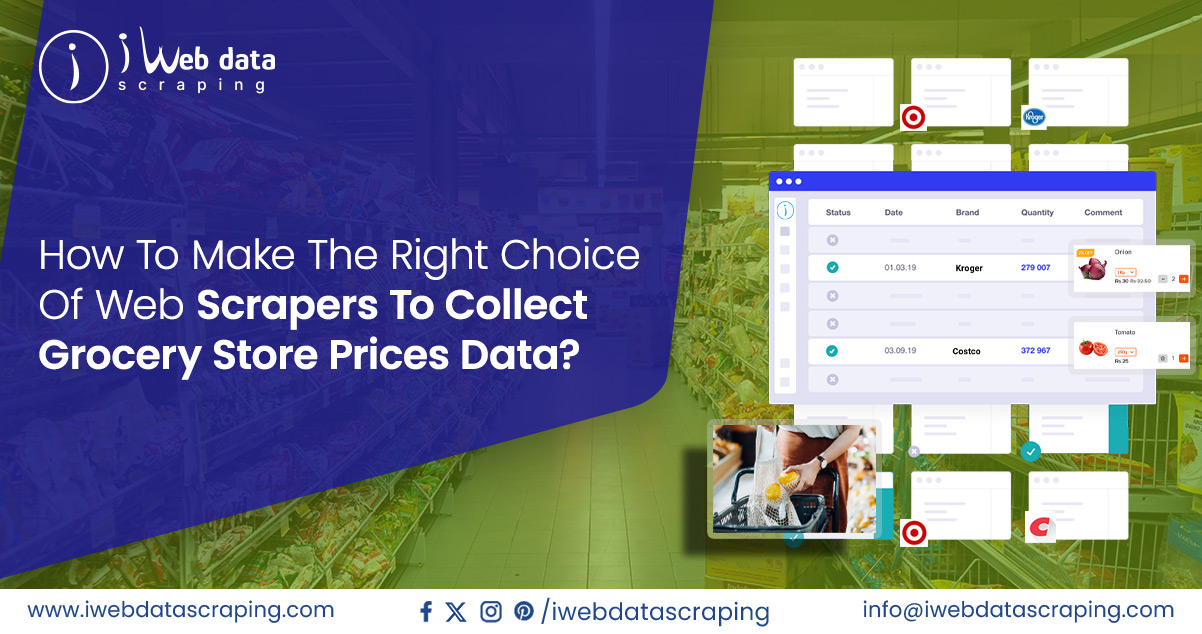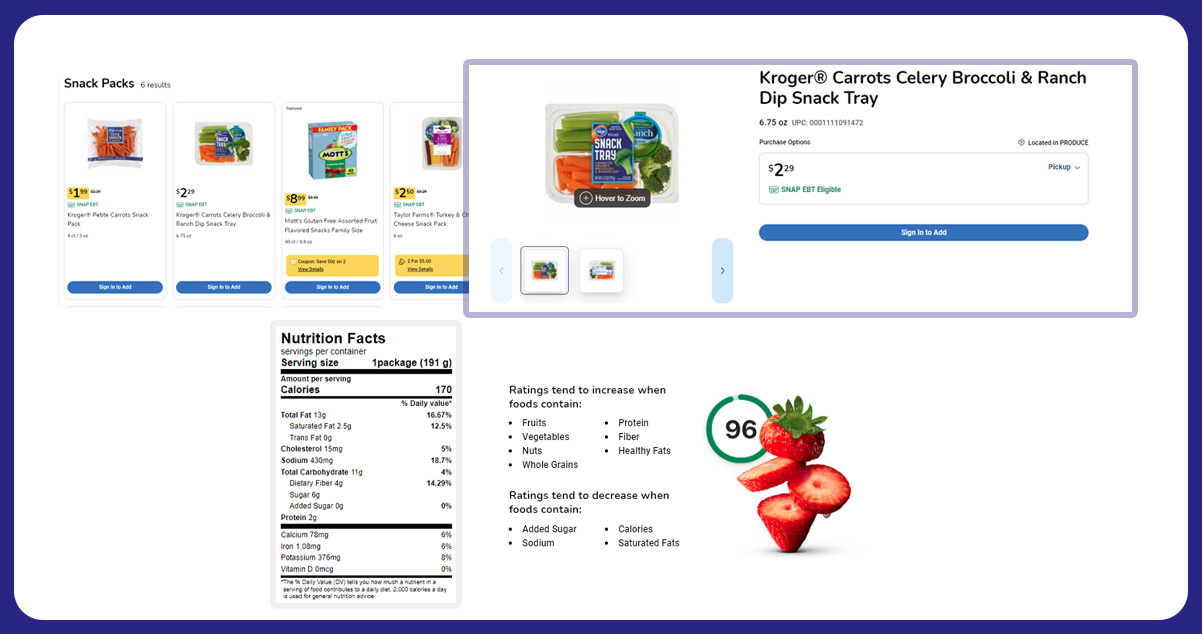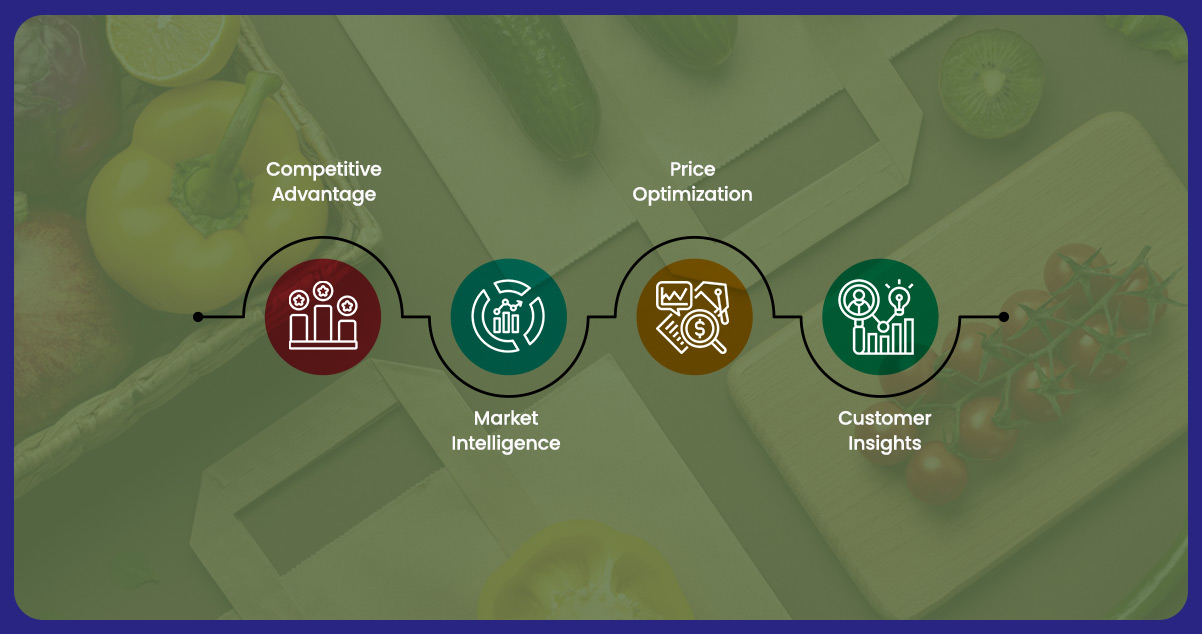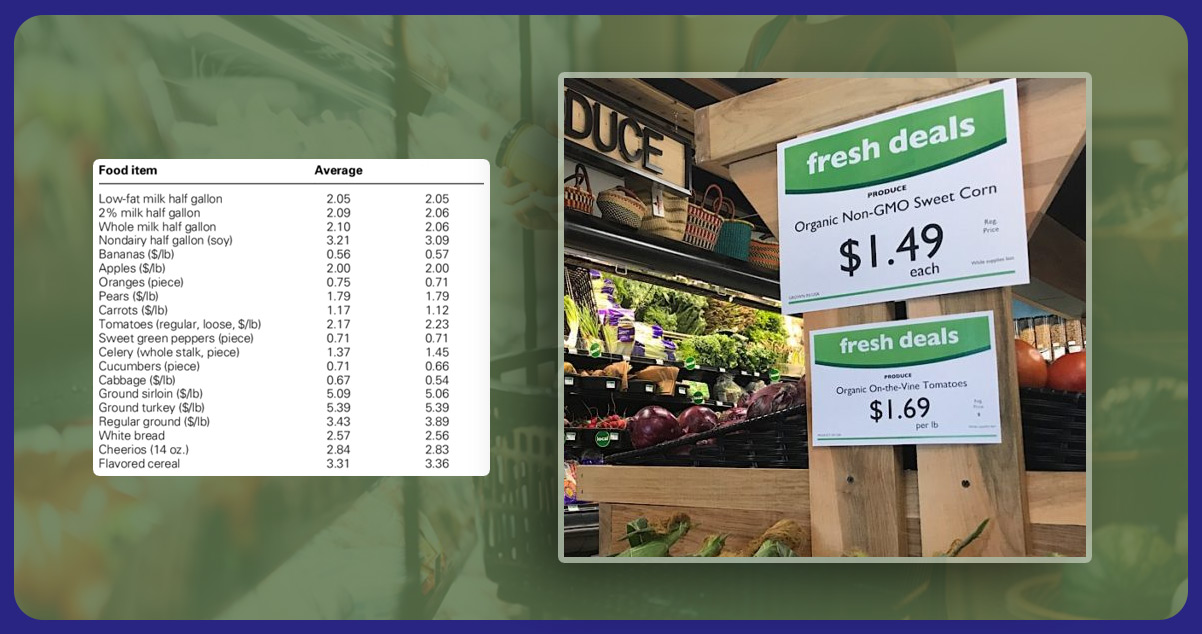

In today's fast-paced world, gathering data on grocery store prices is essential for consumers and businesses. Thankfully, with the advent of web scraping techniques, obtaining real-time and accurate pricing information from multiple grocery stores has become more accessible than ever.
The rise of online grocery delivery platforms has transformed how people shop for groceries, fueled by digital advancements and improved logistics. Major players like Walmart, Publix, Target, and Amazon Fresh are experiencing unprecedented growth, with projected annual revenue to soar by 20% from 2021 to 2031.
Businesses use web-scraping grocery delivery data from market leaders to gain a competitive edge. By leveraging grocery data scraping services, established and aspiring grocery delivery companies can better understand the market landscape and make informed decisions for success. This article will explore how to use web scrapers to collect grocery store prices and unlock valuable insights for smarter shopping decisions and competitive analysis.


Competitive Advantage: Grocery delivery data scraping is a perfect tool to help businesses access real-time information about competitor pricing, product offerings, and promotions. Using this knowledge, companies can fine-tune their strategies to stand out.
Market Intelligence: Scraping data from various grocery delivery platforms provides valuable market intelligence. Businesses can analyze consumer preferences, track trends, and identify emerging opportunities, enabling them to make informed decisions based on data-driven insights.
Price Optimization: With access to pricing data from different platforms, companies can optimize their pricing strategies. They can adjust prices dynamically, ensuring competitiveness while maintaining profitability and responding swiftly to market fluctuations.
Customer Insights: Businesses can understand consumer sentiments and preferences by scraping customer reviews and feedback. It helps tailor products and services to meet customer expectations, improving customer satisfaction and loyalty.
Inventory Management: Grocery delivery data scraping services aids in effective inventory management. Businesses can monitor product demand and popularity, ensuring the stocking of the right products appropriately. It minimizes stockouts and excess inventory, optimizing supply chain efficiency.

Selecting the proper scraper for scraping grocery store prices involves considering various factors to ensure efficient and accurate data extraction. Here's a step-by-step guide to help you make the best choice:
Identify Your Requirements: Determine the data you need to scrape from grocery store websites. Are you interested in product names, prices, availability, or other details? Understanding your requirements will guide your choice of scraper.
Choose the Right Programming Language: Popular web scraping libraries are available in different programming languages. Among libraries like BeautifulSoup and Scrapy, Python is highly popular for web scraping. JavaScript options include Cheerio and Puppeteer. Choose a language you are comfortable with that best suits your project needs.
Ease of Use: Look for a user-friendly scraper that is easy to set up. A user-friendly scraper can save you time and effort in the development process.
Performance and Efficiency: Consider the efficiency of the scraper in terms of speed and resource usage. Efficient scrapers can handle large volumes of data without straining your system.
Support for JavaScript Rendering: Some websites use JavaScript to load content dynamically. If the grocery store websites you target use JavaScript rendering, consider a scraper that can handle it, like Puppeteer.
Robustness and Error Handling: A good scraper should be robust and capable of handling errors gracefully. Look for error-handling mechanisms that prevent the scraper from crashing if it encounters unexpected situations.
Data Parsing and Extraction: Ensure that the grocery data scraper can accurately parse and extract the specific data you need. It should be able to locate relevant elements on the website and extract information in a structured format.
Compliance with Website Policies: Choose a scraper that allows you to respect the terms of service and robots.txt files of the grocery store websites you are scraping. Respecting website policies is essential to avoid potential legal issues.
Community and Support: Check if the scraper has an active community and reliable support channels. It can be beneficial if you encounter any issues during the scraping process.
Scalability: If you plan to scrape data from multiple grocery store websites or expand your scraping efforts, consider a scalable scraper that can handle increased data loads.
Documentation and Tutorials: Ensure the scraper has comprehensive documentation and tutorials to guide you through the scraping process and troubleshoot common issues.
The role of a scraper in scraping grocery store price data is pivotal in gathering and extracting valuable pricing information from various online grocery store platforms. Here are the key roles and functions that a scraper plays in this context:
Data Extraction: The primary role of a scraper is to automatically access grocery store websites, navigate through the pages, and extract relevant pricing data. It locates specific HTML elements containing product names, prices, and other relevant details.
Real-Time Data: A scraper enables the collection of real-time pricing data from multiple grocery stores. It allows businesses to stay up-to-date with current market prices and respond swiftly to changes in pricing strategies.
Efficiency and Scale: Web scrapers can quickly process large amounts of data from numerous websites. This scalability is crucial in gathering comprehensive pricing information from various products and stores.
Competitive Analysis: A scraper enables businesses to perform detailed competitive analysis by collecting pricing data from competitor websites. It includes monitoring competitor prices, promotions, and product assortments, providing valuable insights for pricing strategies.
Price Comparison: Scraper-based data extraction allows businesses to compare prices of the same products across different grocery stores. This information helps consumers decide to find the best deals and savings.
Trend Analysis: Scraped pricing data helps analyze pricing trends over time. Businesses can identify seasonal fluctuations, pricing patterns, and trends to adjust their strategies accordingly.
Forecasting and Inventory Management: Price data extracted from grocery store websites are helpful in forecasting product demand and planning inventory levels. It helps businesses optimize inventory management, reducing costs and wastage.
Personalization: With pricing data from various stores, businesses can effectively customize their offerings and promotions based on regional preferences and target customer segments.
Market Insights: The collected pricing data provides valuable market insights, enabling businesses to make data-driven decisions, set competitive prices, and enhance overall market understanding.
Streamlined Decision-Making: By automating data extraction, scrapers streamline the decision-making process for businesses. The availability of accurate and timely pricing information enables quicker responses to market changes.
Market Research: Pricing data scraped from grocery store websites becomes a valuable resource for market research, enabling businesses to identify emerging trends and opportunities.
Conclusion: A scraper is crucial in collecting, processing, and providing actionable pricing data from grocery store websites. By leveraging this information, businesses can make informed decisions, optimize pricing strategies, and gain a competitive advantage in the dynamic online grocery market.
For further details, contact iWeb Data Scraping now! You can also reach us for all your web scraping service and mobile app data scraping needs